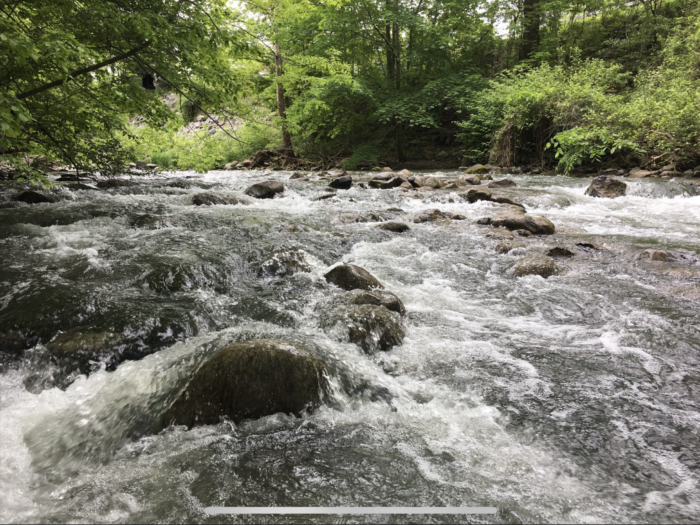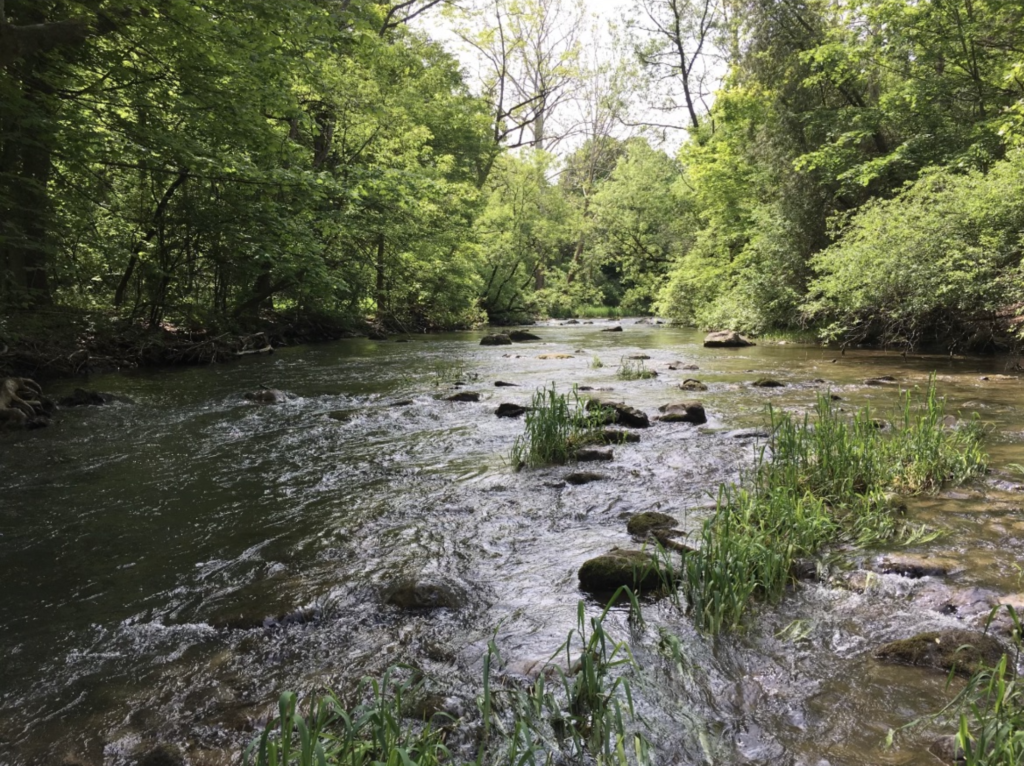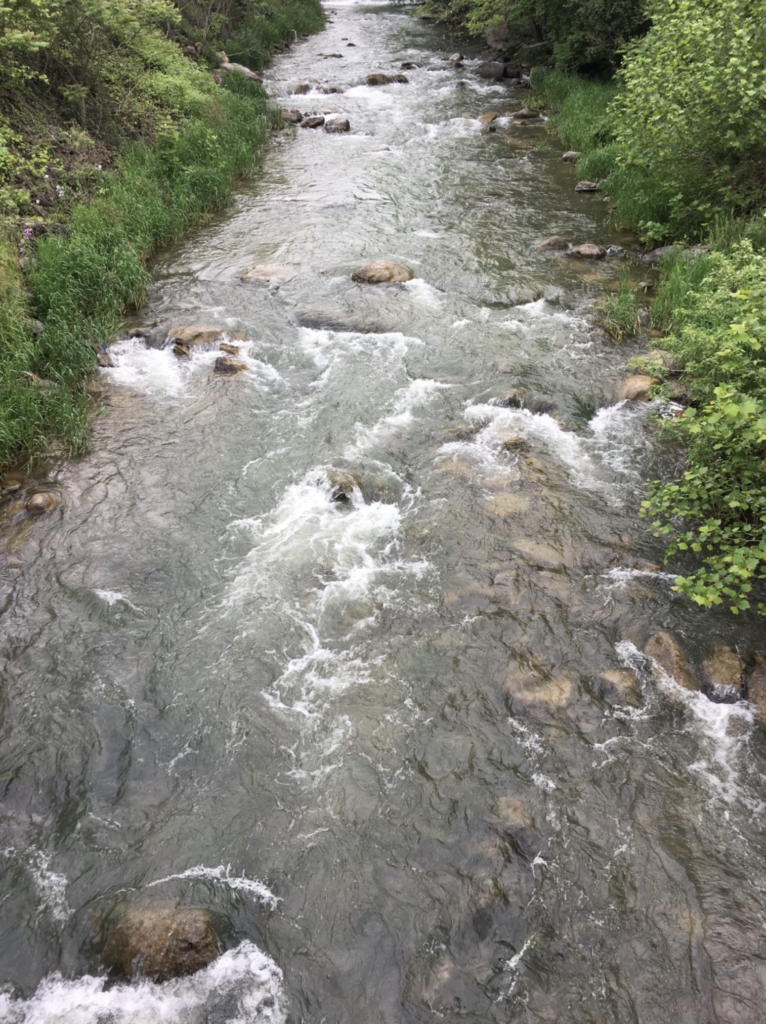
New York Regional Session Three- Butternut Creek
This is part three of the New York regional series. Click here to read about session one, and here for session two.
Butternut Creek was my most frustrating session of the competition. I had fished it before but I could not remember having ever fished the beat I was on, beat three. It was usually a highly productive stream and had a decent mix of stocked and wild fish. We fished the “gorge” section a few days prior in practice, and found the fish eating similar to the ones on Nine Mile. Dark size sixteen nymphs were the ticket, fished single or in tandem depending on the water type. Unlike the other venues these fish didn’t seem to respond well to junk flies, so I didn’t have much of a backup plan if the fish were finicky.
After hiking my gear about a quarter mile down the trail I crossed the stream to my bottom beat flag. I put on the same rig I used in the previous sessions; a fresh 0.18mm tricolored Sempe leader on a T&T Contact II 10’9” 2wt. I threw four feet of Cortland 6x off a stopper knot to a size sixteen 3mm silver beaded tag nymph, and then left my gear by the flag to walk my beat.

It started about a third the way down a deep pool. The section I got was relatively shallow, with a deeper cut on the far bank. A few fish rose in the beat below as I watched, but my section was as quiet as could be. Above this there were a few fast runs on the far bank and then a large flat. The top of the flat looked like my best water, with a few decent runs above near the top flag. Overall it appeared to be a middle of the road beat, and a little shorter than I would have liked.
I was fishing the first session of the day. From what I heard about the previous day, the first session was extremely slow until the sun came out, with a lot less being caught in the morning than the afternoon. When the buzzer rang I started drifting my nymph as slowly as I could through the pool. In just a few casts a nice wild brown ate and was in the bag. After getting on the board so fast I had a bit more confidence than I should have. The next ten minutes of fishing the pool produced nothing. I switched to a chartreuse 3.5mm mop and hooked a large stocker after just a few drifts. In a session this slow I knew it would count for a lot so I tried to baby it in, but it popped after a few large head shakes.
I switched to a size sixteen 3mm silver beaded pheasant tail and continued fishing up the far bank with not so much as a strike for the next half hour. The sun had just started touching the water when I made it to the good section at the top of the flat. I made a long cast into a shallow depression and, almost to my surprise, found a fish on the end of my line. I kept my focus on the depression and started feeling a little better as I landed my second fish from it.
After that fish I cycled through a few flies in the depression with no more love. The 3mm PT went back on and I waded to the near bank to fish the best looking run. It curved hard around a large boulder which made it tricky to get a long drift. Fishing it from the opposite side would have been easier, but I wanted to be closer to my controller to avoid spooking any fish while running back to score one. I landed three and missed one in pretty short order. When the action slowed I ran the mop through and got nothing to show for it.
I continued up, being careful to not spook the run on the way. Above this section was a short pockety area with a few good targets. I missed three fish working this section, which I told myself they were all shorts to try and keep my confidence intact. The water beyond this was flat and shallow for about twenty yards, so I skipped it and headed straight for a wide depression on the far bank.
My 3mm PT looked good to a little wild fish sitting beside a large rock, which ate on a long drift directly upstream of me. I had to cross my fingers and toes that it would score, and luckily it was right on the mark. I turned around and began fishing the depression from the side, where I pulled another small brown, and then lost two large stocked fish back to back. A pretty nice string of profanities left my mouth after the second fish got off. Looking back on it, I think it was due to fishing a relatively heavy tippet with a light wire dry fly hook. Both were solid hook sets and stayed on for a while, so I assume the hook bent just enough to allow them to slip off.

I turned my focus to the next depression up and quickly pulled another two fish floating the sighter from below. I spent a few more minutes fishing it with no eats before heading to the run at the top of my beat. The water looked much better than the two depressions below it, but I had no action to speak of. I switched to the mop and then to a tag nymph but couldn’t convince any of the fish I knew were in there to eat.
With about twenty minutes left I decided to run back down to the start and fish the beat again in the hopes that more fish had woken up as it got later in the day. I didn’t touch anything in the bottom pool, but pulled two out of a shallow riffle above it. Sadly, neither was long enough to score. I worked quickly up to the top of the flat without any more fish. I decided to fish the “best” run from the opposite side as before to show the fish a different drift. One more large brown came out of the very top before I continued on.
I fished the rest of the beat as hard as I could but didn’t touch another fish before the session ended. I closed it out with twelve fish, which I knew wasn’t enough to take a one, but hoped would land me in the top three. When we all met up, I found out two other anglers had twelve fish. We did the math and my fish were just a bit shorter than everyone else’s, putting me in fourth. Certainly not the finish I hoped for, but it was enough that I could still medal if the last session went well. It just goes to show how often those one or two fish that get off make the difference. Even another barely scorable fish would have bumped me to second in the session.
I think my biggest mistake in this session was the size of the flies I was throwing. I controlled that beat the next session and watched the angler pull fish where I didn’t fishing sparse size eighteen or twenty flies. My teammates had also reported they caught fish on that venue on smaller flies, but I stuck to what I was confident in despite having the reasons to try something new. Not that I didn’t have the fish to place higher, but I think I would have had more opportunities if I made a change.
If you’re still enjoying the series, check back next week for the final session! For more information on Team USA Fly Fishing, visit their website here. If you’re interested in getting your feet wet (pun intended) in competitive fly fishing, you can find a list of upcoming competitions on Flycomps.com.
